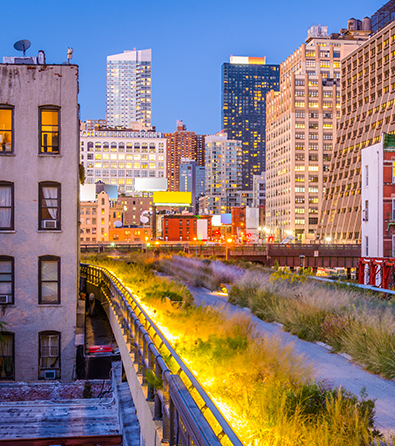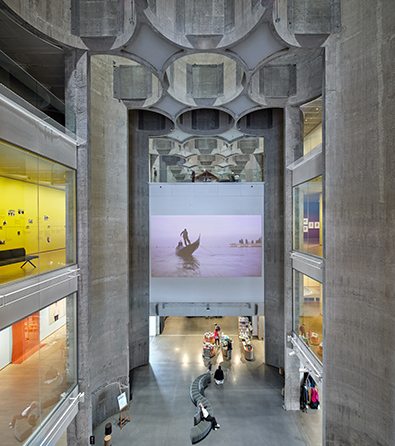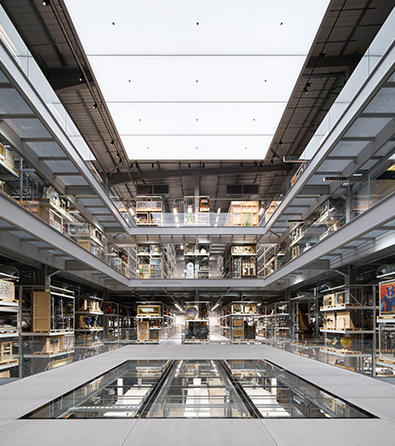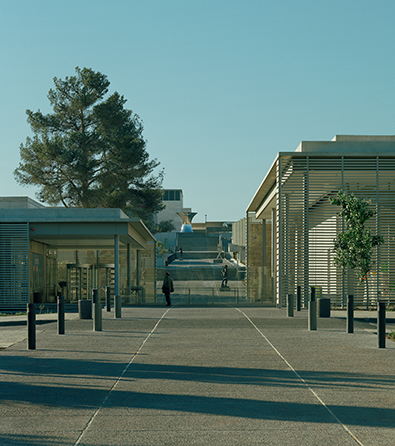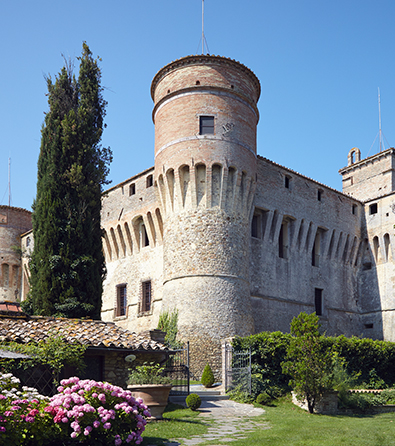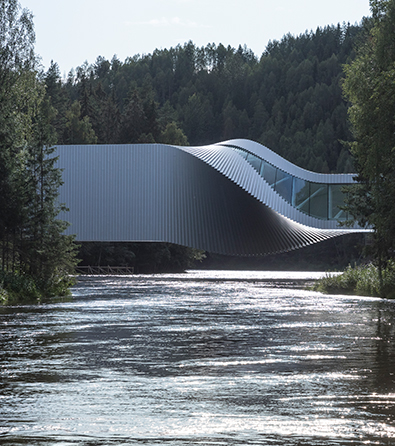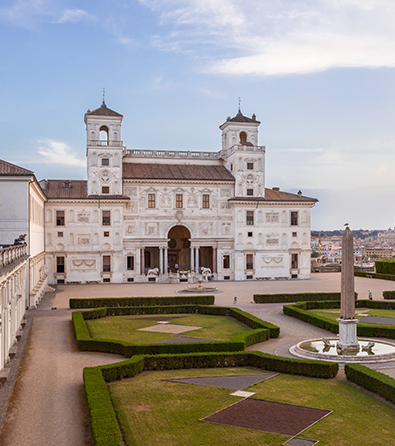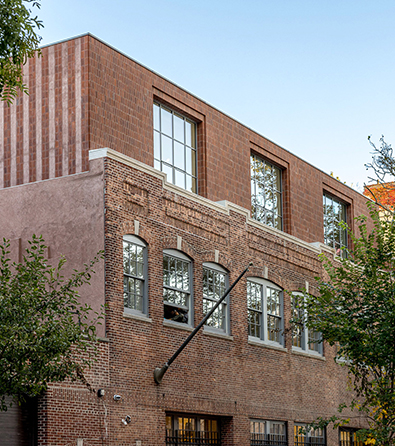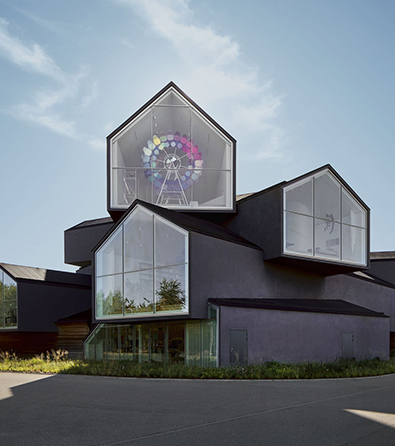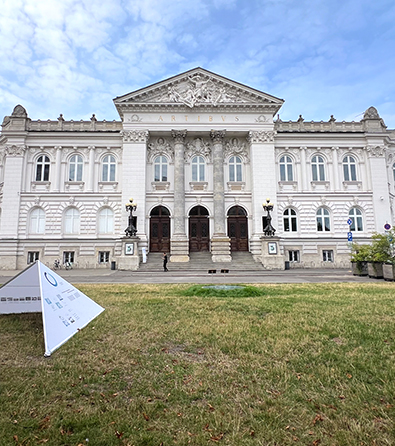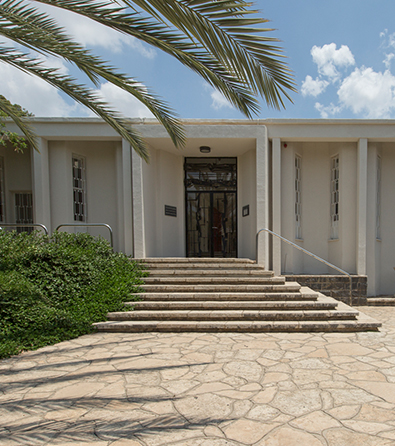Nestled amidst the serene landscapes of Lake Como, the Bellagio Center stands as a testament to the power of interdisciplinary collaboration and the pursuit of global solutions. Founded by the Rockefeller Foundation in 1959, the Bellagio Center has long been a haven for thinkers, artists, and policy-makers. Its establishment was rooted in the belief that transformative ideas emerge from the confluence of diverse minds. Over the decades, its alumni have included Nobel laureates, renowned artists, and pioneering researchers.
I had the pleasure of interviewing Sarah Geisenheimer, Vice President of Innovation at The Rockefeller Foundation. She leads the Convenings & Networks portfolio, which includes the convenings and residency programs at The Bellagio Center.
The Rockefeller Foundation Bellagio Center is a sprawling 50-acre property located at the heart of Lake Como in Northern Italy. The relationship between the Foundation and the Bellagio Center began in 1959 when Ella Holbrook Walker, the American Principessa della Torre e Tasso, generously donated the property to the Foundation with the noble intent “for the promotion of international understanding.” For over six decades, the Center has been instrumental in fostering many significant advances through its residency and conference programs. It is globally celebrated for nurturing cross-cultural and interdisciplinary exchanges.
Every year, the Bellagio residency program welcomes up to 100 top-tier practitioners, scholars, writers, policymakers, and artists from around the world. These month-long residencies are designed to further their work and immerse them in a globally diverse community of residents. The list of former residents is illustrious, featuring names like Nobel Laureate Joseph Stiglitz, acclaimed authors Maya Angelou and Michael Ondaatje, and international policymakers such as Mary Robinson and Montek Ahluwalia.
The Center also organizes approximately 55 week-long international convenings annually. These are orchestrated by various institutions worldwide, with several directly funded by the Foundation. The prestige of the Center, coupled with its prime location, facilitates gatherings that merge decision-makers from diverse sectors. Sarah Geisenheimer shared her insights on the Bellagio Center, emphasizing its transformative nature. She remarked, “The Bellagio Center is not just a beautiful place. It’s an experience. It’s where you can be in a room with a poet, a scientist, a policymaker, and an artist, and everyone is learning from each other. It’s a place of convergence for diverse thoughts, where boundaries blur, and new ideas emerge.”
Geisenheimer captures the essence of the Bellagio Center experience. “The magic of Bellagio,” she says, “lies in the individual projects that residents bring with them, and in the unexpected ways these projects evolve and the relationships that are forged.” While residents come to Bellagio with a clear focus on their work, the structured program, punctuated by communal mealtimes and facilitated dialogues, often leads to transformative shifts in their perspectives. Every resident is required to present their work, fostering a rich exchange of ideas and feedback. This environment of interdisciplinary collaboration has given birth to some remarkable partnerships. For instance, Nobel laureate Joe Stiglitz formed a unique bond with performance artist Suzanne Lacy, leading them to teach each other’s classes and collaborate on projects. Similarly, scholars researching lithium extraction found common ground with a documentary filmmaker, exploring the possibility of presenting their findings in film. Geisenheimer reflects, “It’s truly remarkable what can emerge when you create a space for diverse minds to intersect.”
Geisenheimer shared insights into a unique initiative that the foundation embarked upon in collaboration with the Brookings Institution. The initiative, named “17 rooms,” was designed around the Sustainable Development Goals, with each room dedicated to a specific goal. Room five, for instance, focused on gender equality. This room witnessed the convergence of influential women leaders, including Michelle Nunn, the President and CEO of Care, and Pat Mitchell, among others. They collectively recognized the power of artistic expression in driving change for gender equality. However, this idea lacked the necessary resources for realization.
The Rockefeller Foundation, leveraging its assets beyond financial support, partnered with Care to bring this vision to life. This partnership, known as the Arts for Gender Equality Fellowship, aims to harness the transformative power of art to ignite conversations and drive social change towards gender justice. The fellowship supports a diverse range of artists, connecting them with grassroots and international social justice organizations, political leaders, and the broader arts community. These artists showcased on the Care website, have been given the platform at Bellagio to develop their projects.
Geisenheimer highlighted a few compelling projects, such as a multimedia piece by Indian artist Jasmeen Patheja addressing the question of “What was she wearing?” during instances of sexual assault. This question often posed to victims, perpetuates victim-blaming and shifts the focus from the perpetrator’s actions to the victim’s attire. Through her art, Jasmeen challenges this narrative, highlighting the absurdity and irrelevance of such a question. The project aims to confront social norms and biases, urging viewers to introspect and question their own beliefs and prejudices. Another project by Emilia Yang, an interdisciplinary artist from Nicaragua/United States, delves into queer rights and gender identity in Latin America, drawing from her personal experiences and challenges. The initiative also features poetic expressions from Muslim women, including works by Sabika Abbas, a poet from India. Geisenheimer emphasized the visceral impact of these projects, stating, “They allow people to deeply understand and feel the significance of these experiences.”
Geisenheimer emphasized the foundation’s recent commitment to addressing the impacts of climate change with a substantial investment of $1 billion. While Bellagio has historically maintained a broader focus, most of its programming now aligns directly with the Rockefeller Foundation’s core priorities. Geisenheimer elaborated that their approach to climate change isn’t just about mitigation or adaptation; it’s about overhauling the systems that significantly contribute to the issue. This includes reevaluating our food systems, exploring the connection between climate change and health, transitioning energy systems responsibly, especially in developing countries, and rethinking financing systems. To foster innovative solutions, the Bellagio Center launches open calls for applications, inviting the public to contribute. Over the past two years, these calls have been tailored to specific issues like climate change, well-being, and reinventing capitalism. However, they also maintain a general open call for breakthrough projects across various domains. The foundation ensures a diverse mix of scholars, academics, practitioners, and themes, aiming for geographic, gender, and thematic diversity in their selections.
The Bellagio Center Residency, as described by Geisenheimer, offers a unique and immersive experience for its residents. Located in the main villa, with a few accommodations in smaller properties, each resident is provided with a comfortable room. Artists are given adjoining studio spaces, while others receive office spaces. The residency is structured to ensure a balance between focused work and interaction. Residents are encouraged to engage in communal meals, fostering connections and facilitating interdisciplinary dialogues. The Center also organizes weekly excursions, allowing residents to explore the picturesque surroundings of Lake Como. Geisenheimer emphasized the importance of these interactions, stating, “It’s not about the work you produce at Bellagio; it’s about the relationships you build, the collaborations you forge, and the new perspectives you gain.”
In the residency selection process, Geisenheimer emphasized the importance of innovative ideas and the potential for groundbreaking insights, especially from well-established individuals in their fields. Curiosity and collaboration are paramount. The primary selection criteria focus on a project’s potential impact. Applicants must clearly convey their project’s importance, its intended global change, and its current relevance. The foundation is keen on understanding how candidates will use their work to effect meaningful change. The aim is to assess the broader influence and potential ripple effects of a project.
Geisenheimer concluded our conversation by reflecting on the future of the Bellagio Center. She envisions the Center as a hub for global solutions, fostering collaborations and partnerships that drive transformative change. She emphasized the importance of maintaining the Center’s legacy while adapting to the evolving needs of the world. The Rockefeller Foundation, through the Bellagio Center, remains committed to its mission of promoting the well-being of humanity throughout the world.






